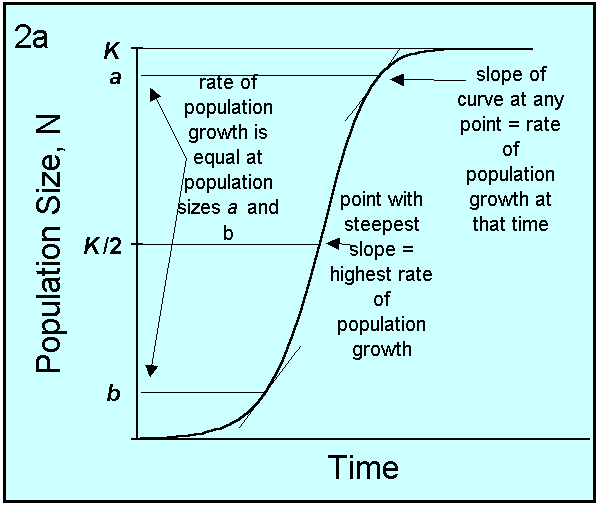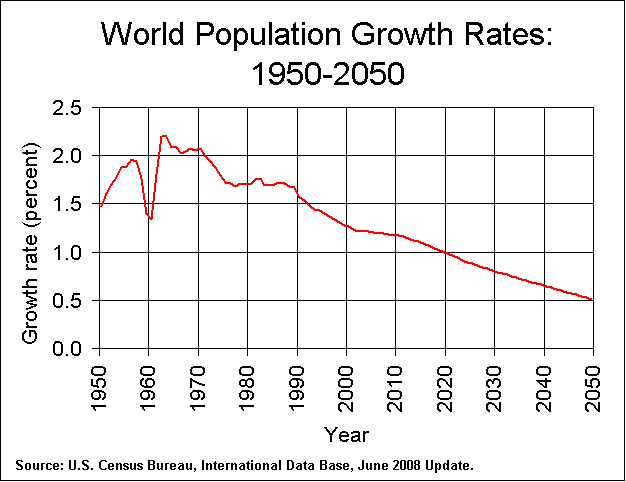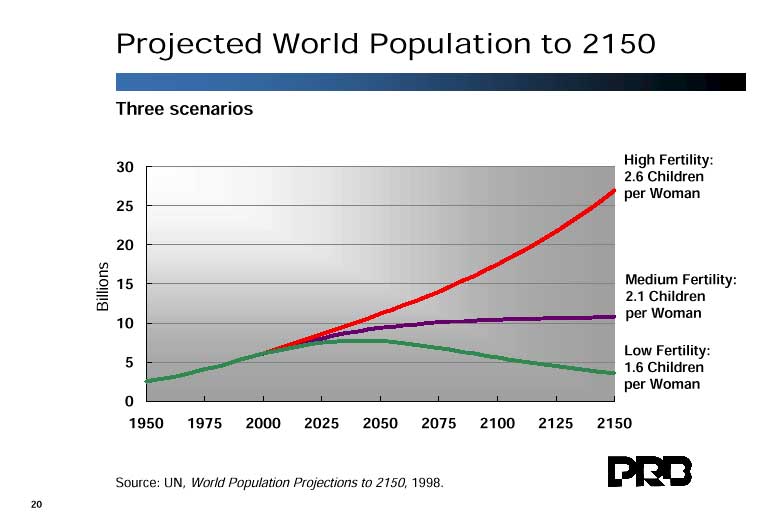Basics of Exponential Growth
Understanding Exponential Growth
Exponential growth drives resource usage for a very simple reason:
Human population increases exponentially:

Now the representation of exponential growth as manifest by the rabbits is where a lot of unnecessary confusion comes into play when describing
the population growth of humans. The term exponential growth does not immediately imply unbounded growth, and it is foolish to think otherwise. Period. In fact, virtually all mammalian populations grow
according to a method called the logistic growth curve. The waveform of that kind of growth is shown below:

And exhibits the important feature that, as the population reaches its carrying capacity (K), the rate of growth decelerates.
Currently the rate of growth of the world's population is in the deceleration phase as evident by the following data:

Some important features of this waveform are the following:
- The obvious dip in the 1958-1960 data was due to the Great Leap Forward in China. A combination of both natural disasters and decreased agricultural output caused China's death rate to rise sharply and its fertility rate to fall by almost half.
- Overall, however, the world population growth increased from 1.5 to
2.2 % in just a little over a decade. When we soon relate growth rates
to doubling times, you will see the disastrous trajectory that humanity
was on.
- This unsusstainable growth rate was recognized and a massive UN led fertility education effort occurred on a global scale. This was fairly
effective as the population growth rate would decline, over a timescale
of 15 years, from 2.2% down to 1.7%.
- But, by 1977 the growth rate stabilized at around 1.7% for about
another 15 years. In this period, human growth was truly increasing exponentially at constant growth rate.
- Starting around 1990, the growth rate begins to slowly decline.
The rate of that decline over the period of 1990 to 2000 was .03%
per year. Since 2000, the rate of decline has slowed dramatically
to .01% per year.
- The current world growth rate is 1.18% per year.
The actual annual data can be found
here.
Currently the world's population is growing at the rate of 1.18% per year,
down significantly from the growth rate 30 years ago. But, small differences
in growth rates make big differences in the ultimate population that
appears as ultimately the exponential doubling time is what matters.
Future population predictions are difficult to make (and will be covered later
in this course). It is more complicated that the simple approaches
that produce these alternatives:





